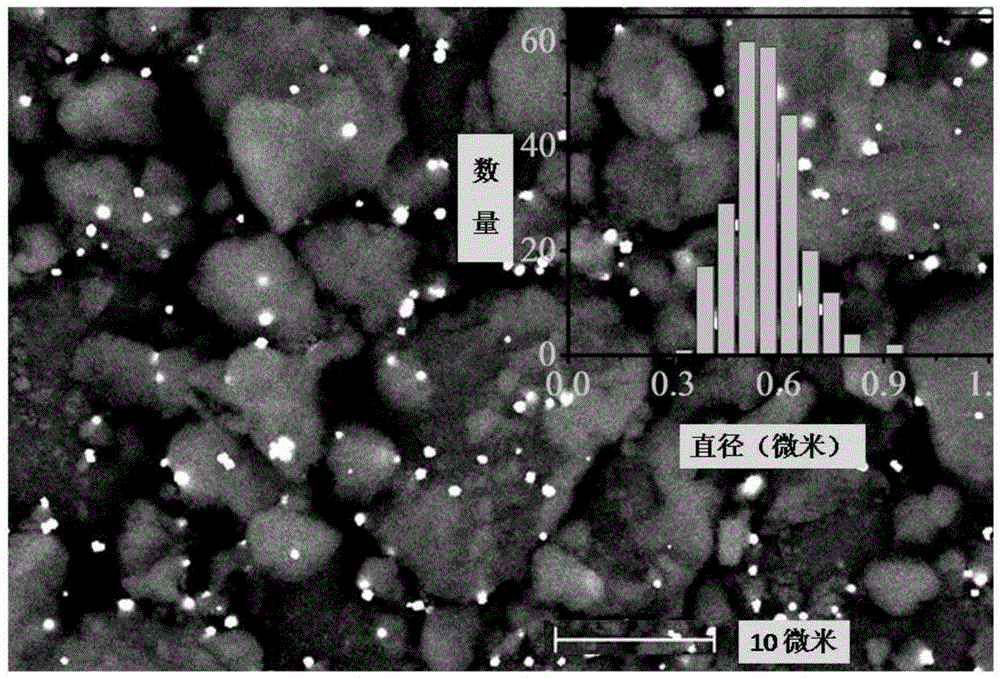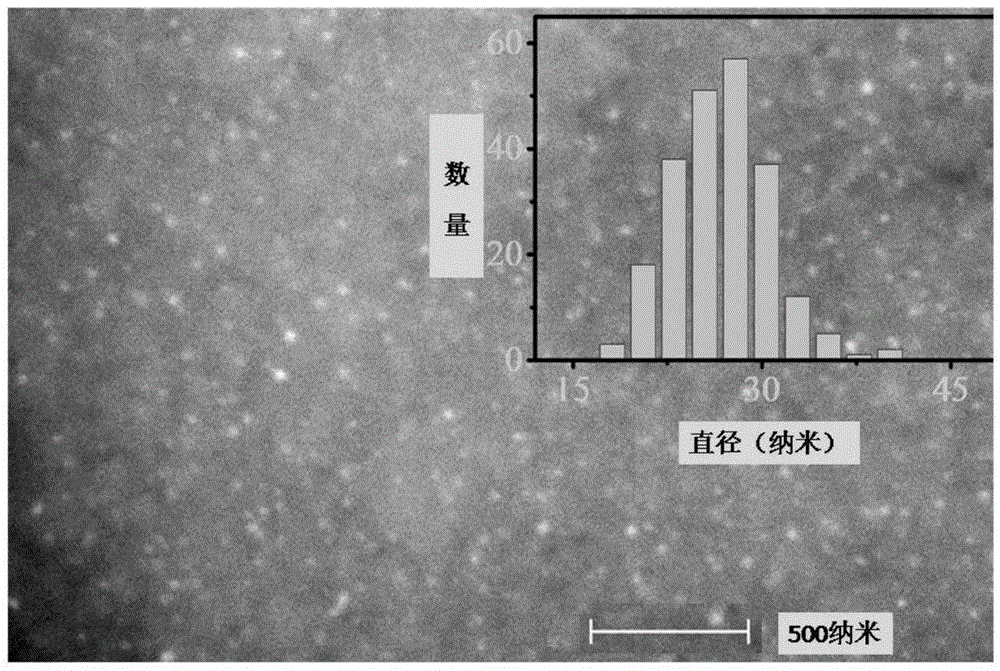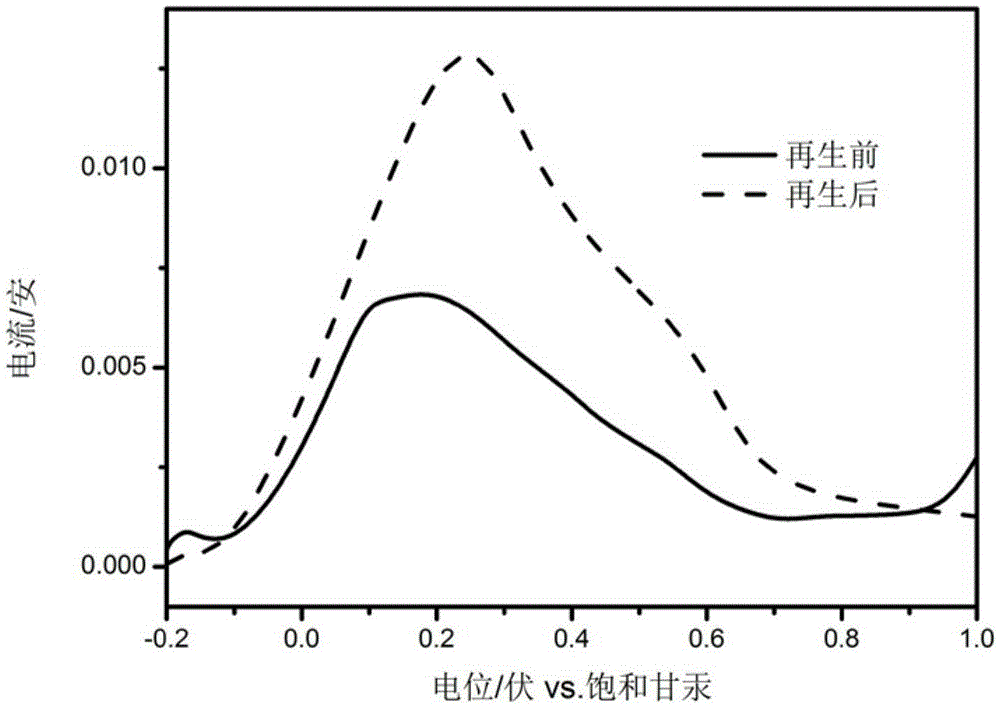Regeneration method of metal catalyst
A metal catalyst and catalyst technology, applied in the direction of catalyst regeneration/reactivation, metal/metal oxide/metal hydroxide catalyst, chemical instruments and methods, etc., can solve the problem of sintering, extraction and pickling without changing catalyst particles Unsatisfactory effects and other problems, to achieve the effect of improving surface utilization, easy industrial production, and simple operation
- Summary
- Abstract
- Description
- Claims
- Application Information
AI Technical Summary
Problems solved by technology
Method used
Image
Examples
Embodiment 1
[0026] Weigh 100 mg of sintered deactivated carbon-supported iron catalyst, 500 mg of urea, grind them evenly with a mortar, put the evenly ground mixture in a quartz boat, place it in a tube furnace, use nitrogen as a protective gas, and calcinate at 900 ° C for 1 hours, the regenerated catalyst is obtained. Scanning electron microscope test such as figure 2 . figure 1 It is a scanning electron microscope test picture of a carbon-supported iron catalyst deactivated by sintering. It can be seen that the particle size of its iron particles is mainly distributed at about 0.6 microns; figure 2 It can be seen that the particle size of the regenerated iron particles is mainly distributed at about 25 nanometers. After the regeneration treatment, the particles are redispersed, and the particle size is one-twentieth of the original particle size.
Embodiment 2
[0028] Weigh 100 mg of sintered deactivated carbon-supported palladium catalyst and 500 mg of urea, grind them evenly with a mortar, put the evenly ground mixture in a quartz boat, place it in a tube furnace, use nitrogen as a protective gas, and calcinate at 350 ° C for 5 hours, the regenerated catalyst is obtained. The obtained regenerated catalysts were subjected to electrochemical tests, such as image 3 Shown by the dotted line.
[0029] Sintering deactivated palladium carbon catalysts for electrochemical tests, such as image 3 shown by the solid line.
[0030] image 3 Among them, the solid line is the cyclic voltammetry curve of the deactivated palladium-carbon catalyst, and the dotted line is the cyclic voltammetry curve of the regenerated palladium-carbon catalyst, from image 3 It can be seen that the dotted line of the oxidation peak current of formic acid is significantly larger than the solid line, indicating that the regeneration method of the present invent...
Embodiment 3
[0032] Weigh 100mg of sintered deactivated carbon-supported platinum catalyst, 1000mg of urea, grind them evenly with a mortar, put the evenly ground mixture in a quartz boat, place it in a tube furnace, use nitrogen as a protective gas, and calcinate at 300°C for 2 hours, the regenerated catalyst is obtained. The metal particles of the regenerated catalyst are less dispersed, and the activity can be greatly improved.
PUM
| Property | Measurement | Unit |
|---|---|---|
| particle diameter | aaaaa | aaaaa |
Abstract
Description
Claims
Application Information
 Login to View More
Login to View More - R&D
- Intellectual Property
- Life Sciences
- Materials
- Tech Scout
- Unparalleled Data Quality
- Higher Quality Content
- 60% Fewer Hallucinations
Browse by: Latest US Patents, China's latest patents, Technical Efficacy Thesaurus, Application Domain, Technology Topic, Popular Technical Reports.
© 2025 PatSnap. All rights reserved.Legal|Privacy policy|Modern Slavery Act Transparency Statement|Sitemap|About US| Contact US: help@patsnap.com



